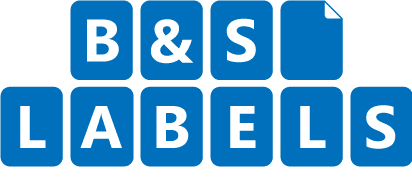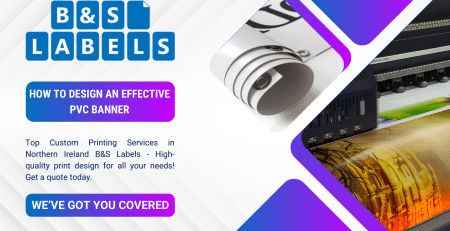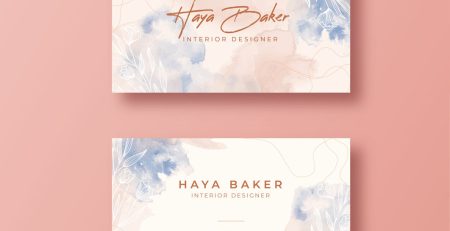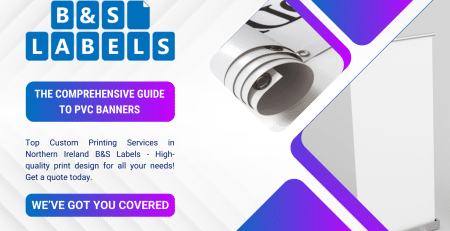Tips for Ensuring Your Artwork Is Print Ready and Flawless
Tips for Ensuring Your Artwork Is Print Ready and Flawless
Are you struggling to prepare your artwork for print? Many artists face challenges ensuring their designs are print-ready and flawless. This guide will cover essential tips, such as understanding printing specifications and optimizing colour accuracy using the right colour model, including Pantone matching. By following these strategies, you’ll tackle common issues like file formats and transparency, ensuring your logo and artwork look their best in offset printing. Engage with these practical insights to enhance the quality of your printed materials and achieve your creative goals effectively.
Understand the Specifications Required for Printing Artwork
Understanding the details required for printing artwork is essential for achieving high-quality results. This section highlights the importance of selecting the correct resolution for raster graphics, choosing the appropriate colour mode—such as RGB or CMYK—and setting up proper dimensions and bleed margins in files. Each of these factors significantly impacts the final output and ensures the artwork meets industry standards.
Determine the Correct Resolution for Your Artwork
Determining the correct resolution for artwork is vital for achieving high-quality prints, especially when painting digitally or working with raster images. A resolution of 300 DPI (dots per inch) is generally recommended for print, ensuring that the details of the pigment appear crisp and vibrant. Whether artists upload their files to a printing service or create their prints, adhering to this standard can eliminate the risk of pixelation, which often frustrates creators looking for pristine results.
Artists should also consider the dimensions of their artwork when setting the resolution. If the dimensions are smaller, a higher DPI may be required, while larger dimensions can maintain quality at lower resolutions, though not below 150 DPI. This knowledge empowers artists to make informed decisions, enhancing their ability to produce flawless prints that showcase their art effectively. Addressing resolution and size upfront helps streamline the printing process and avoids costly errors.
Identify the Appropriate Colour Mode for Print Projects
Choosing the right colour mode is crucial for print projects, as it directly affects how colours appear on the final product. For most printing scenarios, CMYK (Cyan, Magenta, Yellow, Key/Black) is the preferred colour mode since it aligns with the four-color printing process. When using design software like Adobe InDesign, artists should ensure that their artwork and photographs are in the correct file format and colour space before exporting to avoid unwanted colour shifts that can compromise the overall look and feel of the piece.
When artists work with RGB (Red, Green, Blue), which is optimized for digital displays, they may encounter discrepancies in colour reproduction once the work is printed. To achieve the intended colours accurately, it is essential to convert files to CMYK during the export process. Understanding these distinctions helps artists maintain control over the final presentation of their artwork and ensures their vision is realized in print.
Set Up Proper Dimensions and Bleed Margins in Files
Setting up proper dimensions in files is critical for ensuring artwork appears as intended when printed. Artists need to know the final size of their printed piece before starting their design. For instance, if designing a book cover to be printed at 6 x 9 inches, the file should reflect these dimensions plus any necessary bleed area to avoid unwanted white edges caused by slight misalignments during the cutting process.
Bleed margins are typically an additional 1/8 inch on all sides, allowing ink to extend beyond the edge of the page. This aspect is often overlooked, resulting in prints that look incomplete. Artists using software for design must check that all fonts and images extend into the bleed area, ensuring that no important elements are trimmed away during printing. Adjusting these specifications beforehand saves time and minimizes potential issues with print quality.
Choose the Best File Format for Printing Your Artwork
Choosing the right file format is critical for a successful print job. Common file formats vary in quality and suitability for printing, with vector graphics offering significant advantages in scalability. Understanding your palette and colour space options ensures seamless compatibility with print service providers. These factors are essential for achieving flawless results in printed artwork.
Compare Common File Formats for Quality Printing
When selecting an image file format for quality printing, artists often choose between raster and vector graphics, each offering distinct benefits. Raster images, like those created in Adobe Photoshop, are known for their detailed colour rendering but are limited by pixel density; using a high resolution, such as 300 DPI, is crucial for sharp prints. In contrast, vector graphics maintain clarity at any size since they are based on mathematical formulas, making them ideal for logos and illustrations that require scalability without losing quality.
Different file formats also play a significant role in how colours are preserved during the printing process. Formats like TIFF retain colour depth and detail, making them suitable for high-quality prints, while JPEGs can compress colour data, potentially leading to visible artefacts. Understanding the implications of each format assists artists in choosing the right one, ensuring their artwork is print ready and achieving the visual impact they desire in final outputs.
Learn the Benefits of Using Vector Files for Scalability
Vector files are a powerful asset for artists, particularly when creating digital art that demands versatility in scaling. Unlike raster images, which can lose clarity when enlarged, vector graphics retain crispness and detail regardless of size because they are built from mathematical definitions. This characteristic makes them ideal choices for marketing materials, such as logos or illustrations, where consistent quality is critical across various applications, from business cards to large banners.
Illustrators often benefit from incorporating vector files in their workflow, as these formats allow for easy adjustments and revisions without sacrificing quality. For instance, when preparing artwork for a print job, artists can export a vector file for precise output that meets the specifications of different printing techniques. By understanding the advantages of vector files, creators can ensure their artwork is both print-ready and adaptable, effectively addressing common concerns related to image degradation during the printing process.
Ensure Compatibility With Print Service Providers
Ensuring compatibility with print service providers is essential for a successful print run. Artists should confirm that their artwork meets the specific requirements outlined by the provider, including preferred file formats such as JPEG or TIFF, which are often essential for high-quality colour printing. Additionally, understanding if the print shop needs barcodes or any other specialized elements, such as a Cyan colour reference for accurate reproduction, helps streamline the process and avoid unexpected surprises during printing.
Large format printing demands even more attention regarding file specifications. It is advisable for artists to discuss with their chosen provider the optimal resolution and dimensions required for big prints. This kind of direct communication helps ensure that the final output matches the artist’s vision while adhering to industry standards, significantly reducing the likelihood of any discrepancies in quality or colour that could jeopardize the overall project.
Optimize Colour Accuracy and Consistency in Artwork
Utilizing colour profiles is essential for aligning images with print output standards, ensuring vibrant results. Performing test prints allows graphic designers to fine-tune colours and textures, leading to accurate representations. Additionally, assessing lighting and surroundings when evaluating colours helps maintain consistency in the final document. These strategies are vital tools for preparing artwork, particularly in formats such as PNG.
Use Colour Profiles to Match Print Output Standards
Using colour profiles in image editing software, such as Adobe Illustrator, is essential for matching print output standards. These profiles act as a menu of options to standardize how colours are represented across different devices, ensuring that what appears on-screen closely resembles what comes out of the printer. By selecting the correct colour profile before starting a project, artists can maintain vibrant colours and consistent tones throughout their artwork, critical when aiming for high-quality prints.
For optimal results, artists should ensure their document settings match the intended print specifications, including the required dots per inch (DPI) for sharp, clear images. A common standard for print projects is 300 DPI, which helps preserve detail and colour accuracy. This preparation not only reduces the chances of discrepancies between the digital design and the final output but also enhances the overall effectiveness of the artwork when presented to clients or audiences.
Perform Test Prints to Fine-Tune Colours and Textures
Performing test prints is an essential step in preparing artwork for final output, particularly when moving from a digital format to physical prints. By printing samples, artists can evaluate how colours rendered in the CMYK colour model appear on paper, allowing them to identify any discrepancies that may arise from the subtractive colour process used in printing. This essential phase can reveal the need to adjust saturation or hue to ensure that the printed images accurately reflect the intended design, which is particularly important when working within specific dimensions, such as 8 inches by 10 inches.
Test prints serve as a valuable reference point for fine-tuning textures and details, providing a tangible representation of the artwork before committing to larger print runs. Artists can assess the quality of colours, ensuring vibrancy and consistency throughout the piece. With this approach, individuals gain insights into how adjustments might improve the overall appearance, leading to a more polished and professional final product. Engaging in this practice not only enhances the artwork but also minimizes costly mistakes that could arise from inaccuracies in the initial prints.
Assess Lighting and Surroundings When Evaluating Colors
When assessing colours in artwork, lighting plays a critical role in determining how colours appear. For optimal results during the editing process, individuals should analyze their artwork under natural light, as it provides the most accurate representation of colours. This simple tip allows artists to identify any discrepancies and make necessary adjustments before moving to the printing stage, ensuring consistency and clarity in the final product.
Moreover, the surrounding environment can influence colour perception, making it vital to control variables like adjacent colours or reflective surfaces. Setting up a dedicated workspace with neutral wall colours and adequate lighting helps artists focus on their artwork without distractions. By gathering this information and applying best practices, creators can eliminate potential colour misinterpretations that arise during printing, leading to flawless and professional results.
Prepare Your Artwork for Final Edits Before Printing
Before sending artwork to press, it is essential to check for unwanted artefacts and make necessary corrections. Ensuring alignment and managing layers effectively will enhance the design’s overall quality. Reviewing typography for readability and aesthetics is equally important to achieve a polished look. These steps not only improve the artwork’s density but also prepare files in formats like TIFF and Encapsulated PostScript that meet printing standards.
Check for Unwanted Artifacts and Corrections Needed
Before finalizing artwork for print, it is essential to thoroughly examine files for any unwanted artefacts that may disrupt the overall quality. Common issues, such as overprint settings or stray pixels, can lead to unexpected complications in the printed result. Utilizing a comprehensive checklist can help ensure that any artefacts are identified and addressed, while exporting files to PDF format provides the clearest representation of the artwork layout, allowing creators to spot errors easily.
An important part of this process involves reviewing layers within the computer software used for design. Incorrect layer management can lead to visual discrepancies once printed, so artists should ensure that all elements are correctly aligned and properly formatted. Additionally, checking text for readability and ensuring it adheres to the intended style can significantly enhance the print readiness of their artwork, reducing the likelihood of costly adjustments after production has commenced.
Confirm Alignment and Layer Management in Your Design
Confirming alignment and managing layers in design software are critical steps for preparing artwork for print. When elements are not properly aligned, the final print may present misalignments that detract from the overall appeal of the project. For instance, images and text must be arranged thoughtfully to ensure a polished look; this is especially significant in typesetting where the arrangement of text impacts readability and aesthetic balance. Using software features that guide alignment helps ensure that all graphic elements appear coherent, contributing to a flawless end product.
Layer management also plays an important role in ensuring print-ready artwork. Artists need to keep their layers organized, as this minimizes confusion and helps identify issues quickly. For example, using separate layers for text and backgrounds not only aids in editing but also facilitates the export process to formats like PostScript, which maintain the integrity of the design. By streamlining both alignment and layer management, creators can significantly enhance the quality of their printed artwork, addressing common pain points and delivering results that truly reflect their creative vision.
Review Typography for Readability and Aesthetics
Reviewing typography is fundamental for ensuring artwork meets print standards, focusing on both readability and aesthetic appeal. Artists should select fonts that convey the message effectively while remaining clear at various sizes. For example, a sans-serif font may enhance clarity for titles, whereas a serif font could complement body text. Evaluating these choices helps create a harmonious balance that attracts the audience’s attention without overwhelming them.
Attention to detail in typography also involves checking line spacing, letter spacing, and alignment. Proper kerning helps avoid awkward spacing that can detract from professionalism, while consistent line spacing ensures text is easy to read. By adjusting these elements before printing, artists can avoid potential issues with the final output, leading to polished and visually pleasing results that fulfil both functional and aesthetic goals.
Communicate With Your Chosen Print Provider Effectively
Clear communication with a chosen print provider is essential for ensuring that artwork is print ready and flawless. Artists should share their expectations and requirements clearly, ask for proofs, and discuss adjustments before final production. Establishing timelines and budget considerations upfront allows for a smoother process and helps avoid misunderstandings, contributing to successful print outcomes.
Share Your Expectations and Requirements Clearly
Artists should approach communication with print providers by clearly articulating their needs and expectations. By providing detailed descriptions of the desired end result, including aspects like colour accuracy, paper type, and finishing options, they can help ensure that the final output aligns with their vision. For instance, specifying a matte finish versus a glossy one can significantly affect the overall presentation of the artwork.
Engaging in an open dialogue with the print provider allows artists to clarify any uncertainties while discussing project timelines and potential adjustments. When both parties understand the requirements, it minimizes the risk of misunderstandings that could compromise print quality. Requesting proofs before the final run is also vital, as it provides an opportunity to verify that the artwork meets all specifications and addresses any last-minute adjustments without delays.
Ask for Proofs and Adjustments Before Final Production
Requesting proofs from the print provider is a critical step in ensuring that artwork aligns with expectations. Proofs are preliminary prints that allow artists to assess colour accuracy, detail, and overall presentation before the final production run. By reviewing these samples, creators can identify any necessary adjustments, such as colour corrections or layout modifications, which can prevent costly errors and save valuable time.
In addition to reviewing proofs, artists should engage in open dialogue with the print provider about any adjustments needed. Clear communication about specific concerns or enhancements helps to build a collaborative relationship, ensuring that the final product meets high-quality standards. By taking this proactive approach, artists can feel confident that their artwork will look impeccable when printed, effectively reflecting their creative vision.
Establish Timelines and Budget Considerations Upfront
Establishing timelines and budget considerations upfront is essential for a smooth printing process. When artists clearly communicate their project deadlines to print providers, they can ensure that all parties are aligned on expectations, avoiding last-minute rush fees or extended delays. For example, specifying a completion date allows the print shop to prioritize projects effectively, ensuring that the artwork is both printed in time and meets quality standards.
Additionally, discussing budget constraints from the outset prevents unexpected costs that could derail the project. Artists benefit from inquiring about pricing structures for different types of finishes, paper choices, and sizes, which can influence the overall budget. Clear conversations about budgets enable artists to make informed decisions that balance the quality of the final product with financial viability, ensuring that their artwork remains both exceptional and economically feasible.
Review and Adjust Your Artwork Based on Feedback
Gathering input from peers or professionals is vital for enhancing the design quality of artwork. By making necessary revisions with fresh perspectives, artists can identify elements that may need adjustment. Conducting final checks ensures all aspects of the artwork are print-ready before submission, reinforcing the commitment to delivering flawless results in the printing process.
Gather Input From Peers or Professionals on Design
Seeking feedback from peers or professionals can significantly enhance the design quality of artwork. When artists share their work with others, they gain valuable insights that might uncover overlooked details or inconsistencies. For instance, a fresh pair of eyes may point out areas needing improvement in composition or colour balance, ensuring that the final print is both visually appealing and effective in conveying the intended message.
Engaging with a circle of fellow artists or design professionals fosters a collaborative environment where constructive criticism thrives. Artists can benefit from discussions about specific elements, such as typography choices or layout structure, which can directly impact print readiness. This exchange not only improves the overall design but also helps artists develop a deeper understanding of their work, enhancing their capabilities in future projects.
Make Necessary Revisions With Fresh Perspectives
Revising artwork with fresh perspectives can significantly enhance print readiness. When artists gather feedback from trusted peers or creative professionals, they may uncover areas for improvement that they initially overlooked. An outside viewpoint can help identify issues such as unclear typography or ineffective colour combinations that might detract from the overall quality of the piece.
Implementing changes based on constructive feedback not only strengthens the design but also ensures that it aligns with industry standards for prints. For example, updating elements like spacing or layout after receiving input can lead to a polished final product. By embracing revisions and staying receptive to feedback, artists improve both their current work and future projects, ultimately achieving high-quality prints that resonate with their audience.
Conduct Final Checks to Ensure Print Readiness Before Submission
Before submitting artwork for printing, it is necessary for artists to conduct thorough final checks to ensure every detail is optimized for quality output. This process includes scrutinizing alignment, verifying that all text is legible, and ensuring that images are properly formatted. For instance, adjusting the size and placement of graphic elements can significantly enhance the overall composition, making the piece more visually appealing and ready for print.
Furthermore, artists must review colour settings and confirm that their files adhere to the required specifications, like the proper use of colour profiles and resolution settings. Ensuring these technical aspects are aligned minimizes the risk of costly errors in the final print. Taking the time to meticulously address these elements equips artists with confidence that their work will reflect their creative vision perfectly in the printed format.
Ensuring your artwork is print-ready and flawless is crucial for achieving high-quality results. Focus on selecting the correct resolution, colour mode, and dimensions to prevent common printing issues. Actively seek feedback and perform final checks before submission to refine your design and enhance its visual impact. By applying these practices, you can confidently navigate the printing process and showcase your artwork in its best light.












